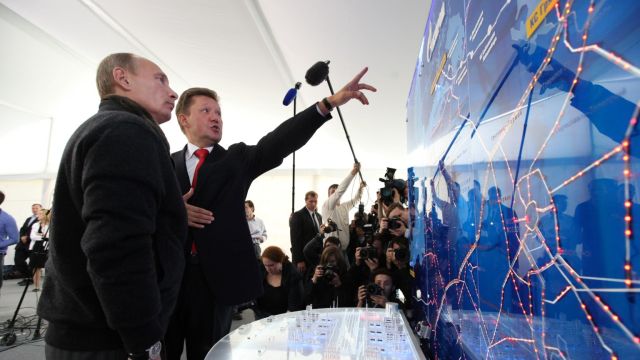Bad vibes at work? Your company probably needs reculturing

- The culture of a company is always evolving. Instilling new cultural habits is a process that has no end date.
- There is no right or wrong framework for establishing a culture, but some general guidelines are helpful.
- In RECULTURING, Melissa Daimler argues that we can redesign our workplaces and find better ways to work together.
Excerpted from RECULTURING: Design Your Company Culture to Connect with Strategy and Purpose for Lasting Success. Copyright © 2022 by Melissa Daimler. Used with permission by McGraw Hill.
Culture can be operationalized and reinforced through the behaviors, processes, and practices that are put in place. It is strengthened or weakened every time an interview question is asked, an employee is onboarded or promoted. ReCulturing is not an HR initiative that is done once. It is not a multiyear change transformation. Rather, it is a designed set of ongoing actions that employees are expected to do daily. Thinking of it in terms of a transformation is old thinking and even overwhelming for any leader trying to manage all the other complexities demanded from them.
No culture is static. Just like we continue to review our strategy and the associated objectives and priorities, we need to continue to iterate and evolve our culture and the associated behaviors, processes, and practices.
I’ve been a part of a lot of “change transformations.” They usually have a beginning and an end. They have a lot of energy in the beginning, only to fade at the time of launch, with the project team burnt out on all the details it took to get to the launch point. With ReCulturing, there may be a beginning, but there is no end. This is an ongoing, cocreation between executives and employees that everyone, at every level, every day is responsible to do.
In addition, even if values remain the same, the associated behaviors, processes, and practices need to be reviewed so that they, too, scale with the company. Here’s an example: A value at one startup I worked with was “Communicate Openly.” They hadn’t identified behaviors with that value, so the value got misinterpreted over time. When the company was first founded, that meant sharing everything with employees. As the company grew, they couldn’t share everything. Though they kept the value, the associated behavior created was, “We responsibly share information.” They shared examples with employees and managers of what this looked like, highlighting that it wasn’t about mistrusting employees and more about streamlining communication to what employees needed to know to do their jobs.
So, how do we close these gaps? The gaps between the elements of culture itself and the gaps between culture and strategy? We do it through ReCulturing—the continuous act of redesigning and reconnecting behaviors, processes, and practices to each other and to the organizational system.
ReCulturing: A Seven Step Framework
I don’t believe in prescribing the “right” framework or steps for you or your company, but I do believe that frameworks help guide conversations, prompt discussion, and prevent you from starting from a blank document with the cursor obnoxiously blinking, waiting for your innovative thoughts while you google a few articles to get you started. You can leverage all seven steps, some of them, none of them, add your own, or create an entirely different set of actions. Maybe you will even do them in a different order. That’s why I didn’t number them. As long as you find a way to connect behaviors, processes, and practices to each other and the greater organizational system, use whatever steps, plan, or framework that facilitates you doing that.
The following is an overview of the seven steps. This process can be done by an internal or external facilitator. I don’t recommend leaders on the executive team facilitate this as they need to be contributors to the process versus the ones driving it.
Contextualize Define culture and how behaviors will be the playbook for working together. In the past, I’ve made the mistake of working with companies without spending a lot of time clarifying and understanding their purpose and strategy before discussing their culture. ReCulturing is about working with the executive team first to ensure that they are inspired by their purpose and aligned on the strategy before diving into how the culture can support it. It is essential to understand the current cultural dynamics within the executive team and how those play out across the organization. Most executives have likely already done a “values exercise,” but clarify that this process is different. Get clear alignment around why you’re doing this: what it is and what it is not.
Curate Even young startups have a lot of information about what’s important to them already embedded into their system. Review all organizational data. This could include the engagement survey results, attrition data, number of promotions and to whom, exit interview data, onboarding materials, recognition practices, learning curriculum, diversity metrics, communications shared internally and externally through social media, Glassdoor reviews, and hiring data. This is an exhaustive list. You do not need to review all of it. Just identify patterns of behaviors, strengths the organization has, gaps, and recommendations for more of those aspirational behaviors that could be needed at this stage of the company.
Define Leverage the data to come up with an initial draft of behaviors. If, after the behaviors are identified, a value needs to be tied to an overall value, that is OK. Figure out a communication channel that can be leveraged for additional thoughts, examples, stories, and ideas. Identify no more than fifteen behavioral statements, and make sure these behaviors go beyond platitudes to meaningful and observable behaviors, easily embedded into processes and practices.
Iterate This is the time for the behaviors to be shared, discussed, and revised. After the behaviors are in a solid place for the first version, an important part of this design process is the pause period. This does not mean “do nothing.” Rather, it is about testing, experimenting, and discussing how the behaviors could be used for decisions, hiring, and rewarding. Do the behaviors come up in meetings? Are they helping make decisions? Are they useful in helping new employees onboard faster? Researchers call the space between creating something and implementing it “incubation” or “mental digestion.”
Some organizations skip this part because they think there has been enough space in between meetings for the behaviors to gestate and form. This works only if there truly was space to test the behaviors, rather than just a need to keep moving forward and “get it done”. Why? Because, well, you know by now – ReCulturing is never really done.
Integrate Identify one core process to integrate behaviors into, such as onboarding. What stories could be shared about the behaviors? How can you create a way for new employees to understand and internalize those behaviors for themselves?
Communicate When communicating the behaviors that were newly designed to employees, it is important to share them in a way that everyone understands. Communicating these doesn’t mean just sharing a list. It is telling the story of how the company has evolved— honoring where the company has been, where it is now, and where it is going. It is bringing everyone along the journey of how these behaviors were formed, why they were designed, and reconnecting those behaviors to how people work. These are the core components of the company message. Share the stories and examples of why these particular behaviors were chosen. Specific stories about how behaviors are helping employees is a powerful message. After hearing these messages employees are ideally even more inspired and want to learn more about how to leverage the behaviors.
Operationalize Continue to embed the behaviors into all the processes and identify practices that support and reinforce the behaviors. Track how they are helping–or not. How are they being used? What is resonating? What is not resonating? What is not being reinforced? Keep learning what is working and what is not. Remember, this is an ongoing process, a journey, not a destination.
Together, we can ReCulture. We can redesign our workplaces with an updated playbook for how to work with each other. That playbook becomes even more impactful when it is connected to the organizational purpose and strategy. When employees know why they are showing up every day, how to show up most effectively, and what they need to work on, the employee experience becomes more enjoyable, management becomes more robust, and the company becomes more adaptable to change.





